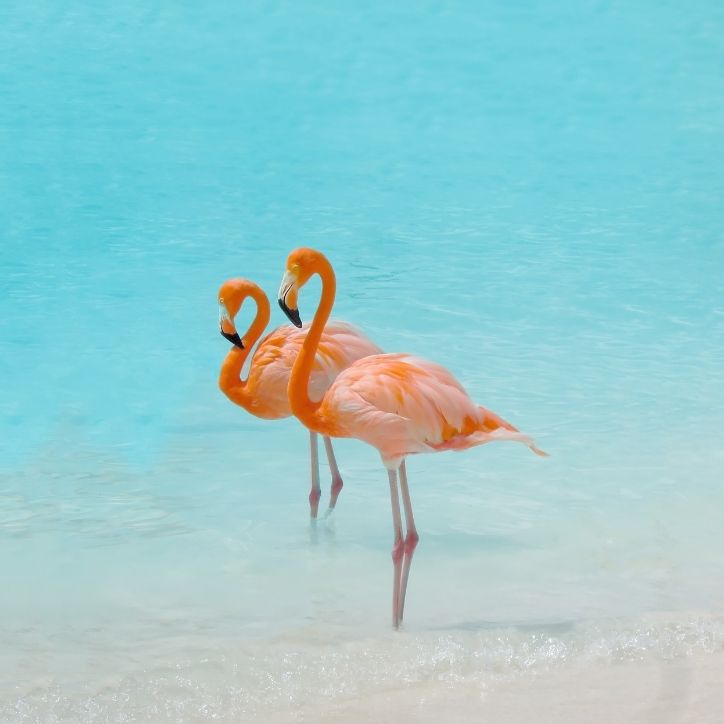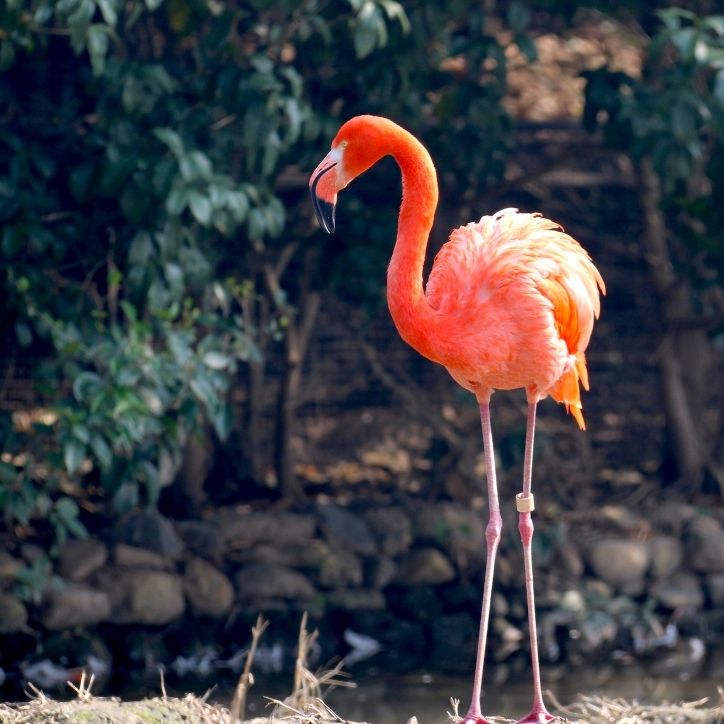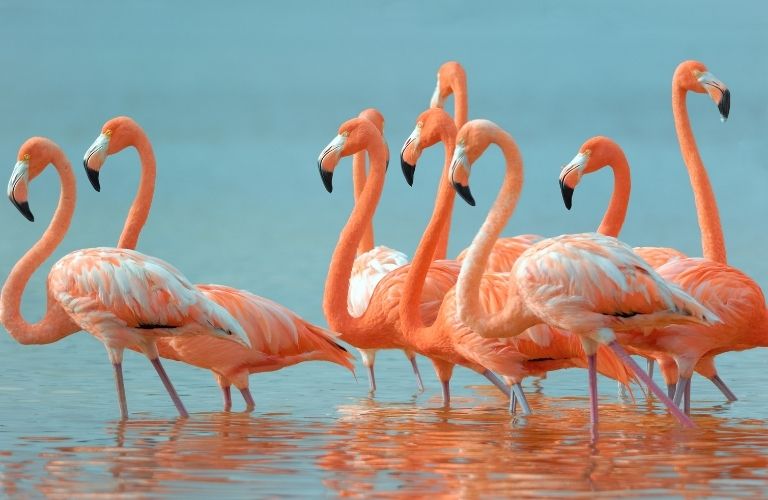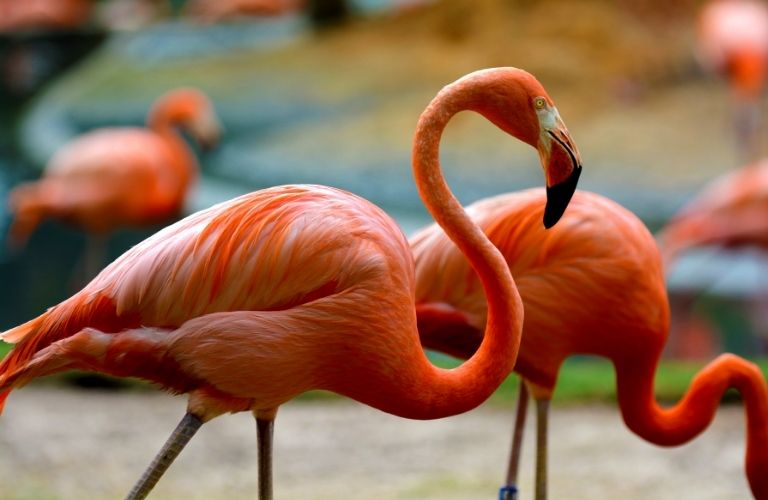Welcome to Abilene Zoo! We are excited to introduce you to the Caribbean flamingo, an iconic birdie with one of the most eye-catching plumages you’ll ever encounter. This fowl is the object of absolute awe, so let’s unravel their matchless characteristics and details about their global conservation status.
Diet
Caribbean flamingos are filter feeders that forage from their aquatic ecosystems. Their long legs keep them rooted even in deep waters, enabling them to feed on algae, small crustaceans, and brine shrimp. This specialized diet serves as sustenance and the source of their distinctive pink coloration, as it is rich in carotenoids which are key in pigmentation.
Habitat
Caribbean flamingos find nestling grounds in both freshwater and saline ecosystems as they’re suitable abodes abounding with food. They are indigenous to the Caribbean and northern South America and can be found in coastal regions, salt flats, and lagoons.
Size and Weight
Caribbean flamingos are very tall and large. Their adults are among the largest flamingo species as they stand between 47 to 57 inches tall and weigh around 4.2 to 6.6 pounds. Males are generally larger than females, though the size difference is not significant. Caribbean flaminglets are gray and gradually develop their pink hue as they mature, usually reaching full color by two to three years of age.
Migration
Flamingos are generally non-migratory but Caribbean flamingos have seasonal migration patterns in the wild. They often travel between breeding sites and feeding grounds, influenced by water levels and food availability. In dire situations, these migrations can cover considerable distances.
Conservation Status
The Caribbean flamingo is currently listed as a species of Least Concern by the IUCN, indicating that they are not at immediate risk of extinction. However, habitat loss due to coastal development, pollution, and climate change continue to threaten their prosperity.
Fast Facts
FAQ
Are caribbean flamingos endangered?
Caribbean flamingos are not considered an endangered species. Their populations are still stable, thanks to successful conservation efforts and protected habitats. However, like many wildlife species, they are still under threats of habitat loss and environmental changes.
What do caribbean flamingos eat?
Caribbean flamingos primarily feed on algae, small insects, and crustaceans like shrimp. They use their specially adapted beaks to filter food from the water, sifting through mud and water to find their meals.
Where do caribbean flamingos live?
Caribbean flamingos are native to several warm, tropical areas. They inhabit the Caribbean, the Galápagos Islands, and along the northern coast of South America. They live in shallow lakes, lagoons, and mangrove swamps, wading in the water as they forage for food.







